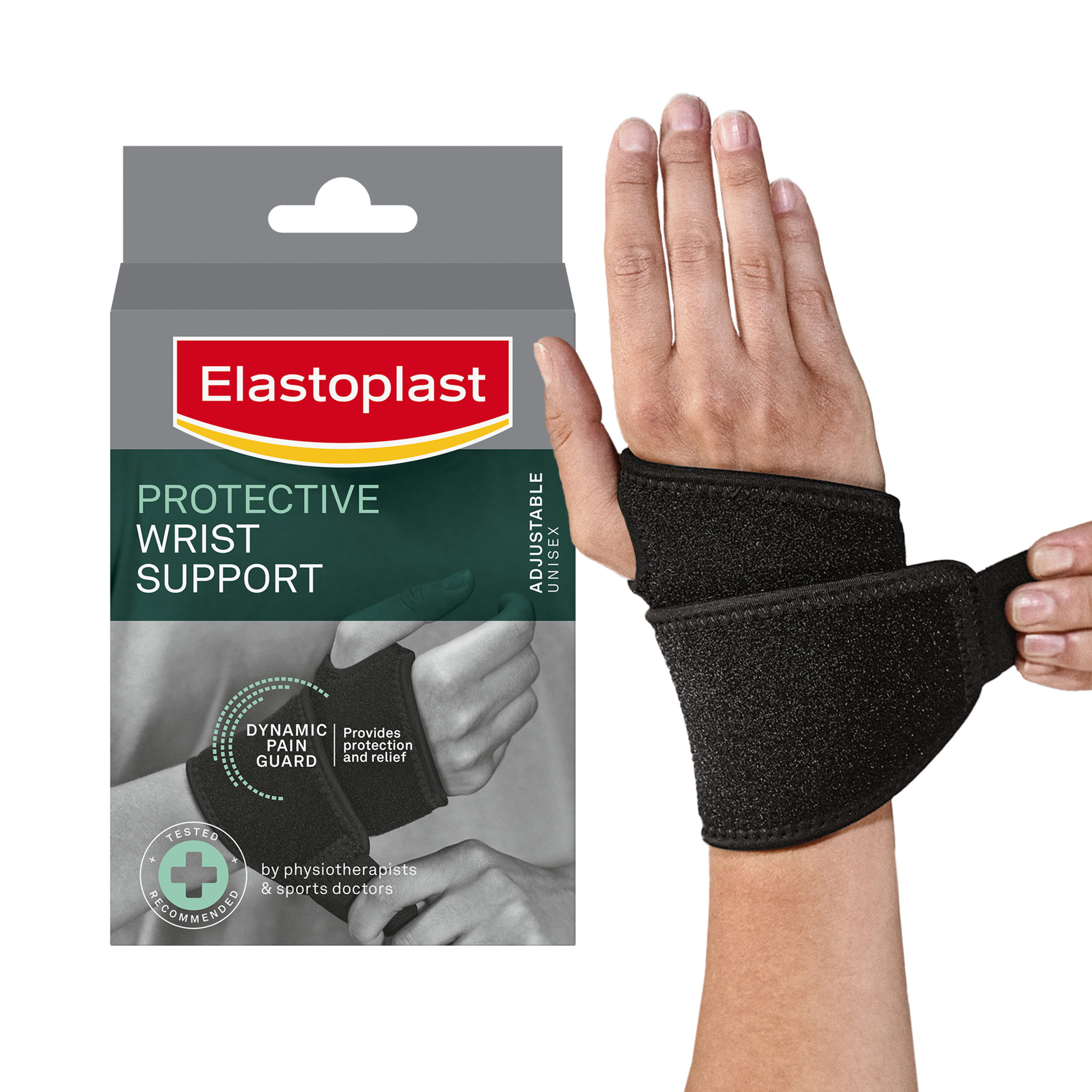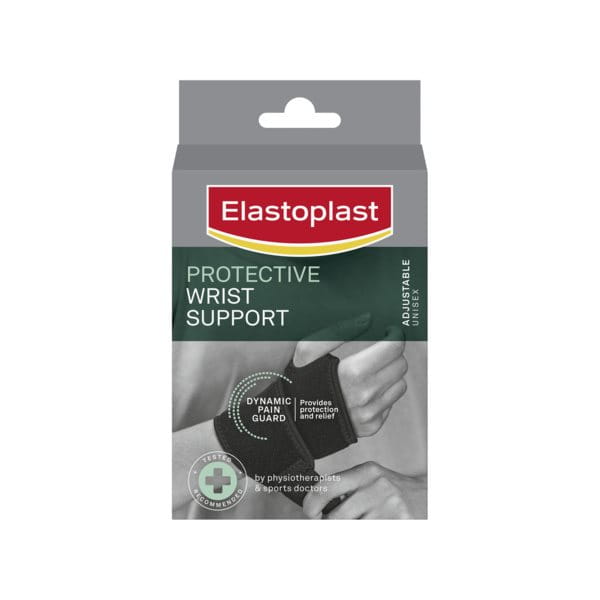The wrist is one of the most exerted joints throughout the body, and is commonly subject to sprains or even more severe injuries, such as dislocation and bone fractures. Wrist injuries can be caused by various factors ranging from overexertion to direct trauma, and can affect anyone.
Wrist pain can complicate basic activities such as lifting items, writing, or typing, but wearing a wrist support can alleviate your pain. Here we show you how to wear a wrist support, and answer some common questions.
How does a wrist support work?

Elastoplast wrist supports are tested and recommended by experts to help relieve injured or weak wrists, while protecting from further injury. They are equipped with innovative technology to provide adequate support during physical activity and the degree of compression can be fitted according to your personal comfort and needs.
Our products offer support to help relieve the pain associated with sprains and strains, hand arthritis, tendonitis, carpal tunnel syndrome.
How to put on a wrist support
If you’re unsure how to wear a wrist support, take a look at the below steps and our helpful video on the Protective Wrist Support for further guidance:
- Place your thumb in the loop, ensuring the smooth side faces the skin.
- Wrap the support over the top of your wrist.
- Bring the support under the wrist and back around the top of your wrist. Secure hook fastener and adjust support until it fits firmly, yet comfortably.
When should I wear wrist support?
Wrist supports are typically worn by people who need to prop up a wrist that has been injured or is fragile. It is recommended that you wear an Elastoplast Wrist Support during activities that typically cause or exacerbate your wrist discomfort, for example when exercising or typing.
When should I not wear wrist support?
The main function of a wrist support is to ease discomfort and provide relief from inflamed, or painful wrists. Here are some circumstances where a wrist support would not be suitable:
Should you wear a wrist support all day or overnight?
Most wrist supports are designed for active wear and meant to be used during sports or when you are engaging in activities. They are not recommended to be worn for extended periods of time.
An important point to be aware of is that wrist supports should only be worn during movement that typically causes or exacerbates your wrist discomfort.
Does a wrist support need to be tight?
If you’re wondering how tight your wrist support should be, it does not need to be unbearably snug in order to work. You should avoid making it too tight because this can restrict blood flow or worsen your wrist injury.




